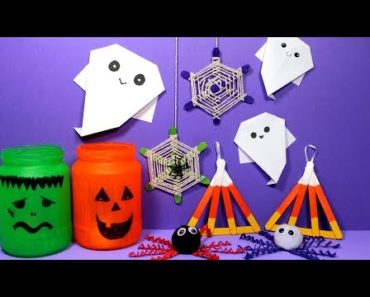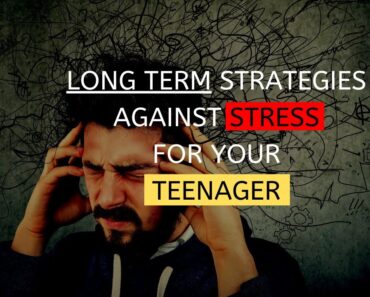Have you ever wondered what we are made of? You would be amazed to know that our body is composed of tiny cells that have formed a highly complex structure called the human body. These cells form tissues, organs, and organ systems that together form the complex biological system that we are today.
Masses of cells in the body form tissues, which form organs. Multiple organs of similar function form an organ system. We stay healthy when all the organ systems function properly (1).
This post is for curious minds who want to learn about the mysterious human body and its functioning. Read on to know more about the fascinating facts and insights about the human body for kids.
Human Body Parts For Kids
The main structure of a human body
The external part of a human body comprises the head, neck and trunk, forelimbs, and hind limbs. The head and neck house the controlling organ brain that extends throughout the body via the spinal cord. All the important organ systems are located in the neck and trunk. Forelimbs include arms and hands that help grasp, lift, and hold objects. The hind limbs consisting of legs and feet provide mobility to the body.
Senses
The human body has five senses, which convey the messages of the outside world to the brain. The eyes, nose, ears, tongue, and skin are the five sense organs. The senses they perceive are:
- Sight through eyes
- Smell through nose
- Hearing through ears
- Taste through tongue
- Touch through skin
Cells
The fundamental unit of an organism is a cell. A human body has many types of cells. Humans have about 30-37 trillion cells in the body (2). When cells of similar functions accumulate together, they form tissues.
Tissues
A mass of cells specialized in the performance of a particular function forms a tissue. There are four types of tissues (3):
- Epithelial tissues are also known as lining cells. They line the internal parts that come in contact with constituents of the external world. Epithelial cells are observed in the gastrointestinal tract, in the blood capillaries, and the pleura around the lungs. These tissues protect the internal organs and have sensory function
- Connective tissues separate, connect, or support different body tissues and comprise three components: elastic or collagenous fibers, a gel-like substance in the extracellular matrix, and cells.
- Nervous tissue includes neurons and their supporting cells called neuroglial cells. Neurons generate electrical impulses throughout the body, while neuroglial cells protect neurons.
- Muscular tissues help in the movement of the body. There are three types of muscle tissues:
- Skeletal muscles are attached to bones. They pull the bones when there’s a requirement of movement.
- Smooth muscles are found in blood vessels and all the visceral organs except the heart.
- Cardiac muscles are seen in the heart.
Organs
Tissues with similar functions form an organ. Except for the skin, all organs are located in the body. Heart, liver, and lungs are some examples of organs. Few organs are also found inside cavities. The stomach is present in the abdominal cavity, and the lungs in the thoracic cavity.
Organ systems
Organs and body structures of similar function form organ systems. A human body has 11 organ systems:
1. Skeletal system
A skeletal system provides the framework to a body and acts as a protective cover for the internal organs. The human skeleton comprises bones, tendons, ligaments, and cartilage. Few large bones have a spongy tissue inside them called the bone marrow, where the synthesis of red blood cells takes place. Bones are the major storage site for calcium and phosphorus. They are responsible for the support and movement of the body. The shape of the bones can be long, short, irregular, or flat.
2. Muscular system
Since the skeletal system and the muscular system usually function together, they are together called the musculoskeletal system. Muscles help in the proper movement of the bones and act as a motor to the body’s movements.
3. Circulatory system
Heart, blood, and blood vessels are parts of the circulatory system.
The blood carries oxygen, nutrients, immune cells, and hormones to multiple organs through its blood vessels, thus becoming the body’s transportation system. Waste products such as carbon dioxide, urea are also carried through the blood.
The heart functions through two circuits. In the pulmonary circuit, the heart transports deoxygenated blood to the lungs. Here, carbon dioxide (a toxic metabolic waste generated by the human body) is exchanged with the oxygen in the lungs. This oxygenated blood returning to the heart will be pumped to various organs through the systemic circuit.
Arteries, veins, and capillaries are blood vessels. Blood is carried away from the heart through the arteries. Veins carry blood from other parts of the body to the heart. Capillaries are found in the organs, where various metabolic products are exchanged. (4).
4. Digestive system
The digestive system carries out the breakdown of the consumed food into nutrients. A series of organs starting from the mouth, esophagus, stomach, small intestine, and large intestine ending in the rectum form the digestive system. The food we consume moves through this sequence with the help of systematic contractions called peristalsis (5). The food we consume through the mouth will pass through the esophagus to the stomach and mix with gastric juices to help digestion. The stomach and small intestine break down the food into smaller molecules such as proteins, fat, sugar, vitamins, and minerals. The small hair-like protrusions on the wall of the small intestine are called the villi and help absorb these nutrients into the bloodstream.
The liver, gallbladder, and pancreas are the accessory digestive organs. The pancreas secretes pancreatic juice, and the liver secretes bile. When food reaches the small intestine, these organs release digestive juices. The gallbladder is a storehouse of bile.
Any undigested food reaches the large intestine, where it is concentrated and excreted as feces on reaching the rectum.
5. Nervous system
The brain, spinal cord, and related nerves are part of the nervous system. This system allows the human brain to control various parts of the body through its large nerve network (6).
Structurally, the nervous system can be divided into two parts. The Central Nervous System (CNS), consisting of the brain and spinal cord, is responsible for the processing of thought, cognition, and other such functions. The Peripheral Nervous System (PNS) consists of nerves, which are responsible for receiving and transmitting information between the brain and other parts of the body through the sensory and motor neurons.
Functionally, the nervous system is again divided into two parts. The Somatic Nervous System (SNS) is responsible for voluntary actions such as speech. The Autonomic Nervous System (ANS) is responsible for involuntary actions such as digestion, heartbeat, and reflexes.
6. Respiratory system
The nose, nasopharynx, trachea, and lungs are parts of the human respiratory system. They take oxygen from the air and release carbon dioxide back into the air. It is located above the diaphragm. The respiration process is divided into two steps —inhalation and exhalation (7).
During inhalation, the diaphragm relaxes, creating a vacuum in the lungs. Due to this, the air is drawn into the trachea and eventually reaches the alveoli, the functional unit of the lungs. Alveoli are tiny air sacs surrounded by a network of capillaries carrying deoxygenated blood. Here, the oxygen in the alveoli is exchanged with the carbon dioxide of the blood capillaries. Now, the oxygenated blood is sent to the heart for distribution throughout the body.
During exhalation, the diaphragm contracts, and the carbon dioxide absorbed from the bloodstream is released back into the air. This is followed by another round of inhalation and exhalation.
7. Endocrine system
An endocrine system comprises glands. They secrete regulatory hormones responsible for human growth, metabolism, and reproduction. The system includes the pituitary gland, adrenal glands, pancreas, thyroid, and gonads. An imbalance in the endocrine system leads to the malfunctioning of the homeostasis of the body. The endocrine hormones are secreted directly into the bloodstream.
8. Urinary system
The kidneys, urinary bladder, and urethra are part of the human urinary system. The waste accumulated in the blood is filtered by the kidneys and excreted through the body as urine.
9. Immune system
The lymphatic system and the immune system work together in protecting the body from external threats. When foreign particles, such as bacteria or viruses, enter the human body, the immune system recognizes them and releases antibodies, cytokines, or macrophages for their destruction. The immune system comprises the white blood cells, lymph nodes, lymph channels, tonsils, adenoids, appendix, spleen, bone marrow, Peyer’s patches, and the thymus gland.
10. Reproductive system
The human reproductive system includes internal and external sex organs. The survival and the population growth of a species depend on the reproductive system. The testes and ovaries are the gonads of males and females, respectively.
The sperm produced by the testes of the male reproductive system fuses with the egg released by the ovaries. This fusion leads to the formation of an embryo, which develops into a fetus in the uterus of the female reproductive system for up to nine months.
11. Integumentary system
All the external protective organs form the integumentary system. These include skin, hair, sweat glands, and nails. They provide structure to the body, protect the internal organs, and act as an interactive medium to the outside world.
Human Body Diagram For Kids
30 Human Body Facts For Kids
Here are a few interesting facts about the human body (2) (8) (9) (10).
- The human blood is composed of red blood cells, white blood cells, platelets, and plasma.
- Up to 60% of the human body is water.
- A human heart beats around 100,000 times in a day. An adult heart beats around 60-80 times per minute, while a child’s heart beats 100 – 120 times.
- Skin is the largest human organ.
- The acid in the stomach is strong enough to dissolve heavy metals.
- To make room for the heart, the left lung is smaller than the right lung.
- At birth, a person has 270 bones. As the individual grows up, few of these bones fuse and reduce to 206 bones in adulthood.
- The electric current generated in the brain is 12-25 watts, which is enough to power LED bulbs.
- Because humans have a spine, they are classified as vertebrates.
- The stapes bone located in the middle ear is only 2.8 millimeters, the smallest bone in the body.
- Digestion starts in the mouth. The saliva consists of an enzyme called salivary amylase, which initiates the digestion process.
- There is hydrochloric acid in the stomach. A mucous lining around the wall of the stomach prevents it from damage.
- There are approximately 25,000 white blood cells in a drop of human blood.
- The movement of the lungs is controlled by the diaphragm. The lungs cannot move by themselves.
- There are more than 600 skeletal muscles that help in various movements of the human body.
- The tongue is the strongest muscle in the human body.
- More than a quarter of the oxygen inhaled is consumed by the brain.
- Red blood cells impart color to the blood due to the presence of a red-colored pigment called hemoglobin.
- It takes about 12 hours to digest food completely.
- The heart is the most powerful organ. It can squirt out blood up to a range of nine meters.
- Hands and feet comprise more than half of the bones of the human body.
- The human brain has two hemispheres. The left side of the body is controlled by the right hemisphere, and the right side of the body is controlled by the left hemisphere.
- There are around 200 different types of cells in the human body.
- If the blood vessels of the human body were to be stretched out, they would measure around 60,000 miles in length, enough to wrap around the earth 2.5 times.
- The entire digestive system is 30 feet long.
- A human ear has two functions: hearing and maintaining body balance.
- The integumentary system regulates the body temperature.
- Allergic reactions are the result of the immune response to a compound or substance.
- The lymphatic system is twice larger than the circulatory system.
- In addition to secreting bile for digestion, the liver also metabolizes waste products and is a storehouse of vitamins and minerals.
The human body is a highly-organized structure capable of performing several complex tasks and processes. Each body part has a unique function. Understanding the basic functions and anatomy of the human body helps in understanding ourselves.

































